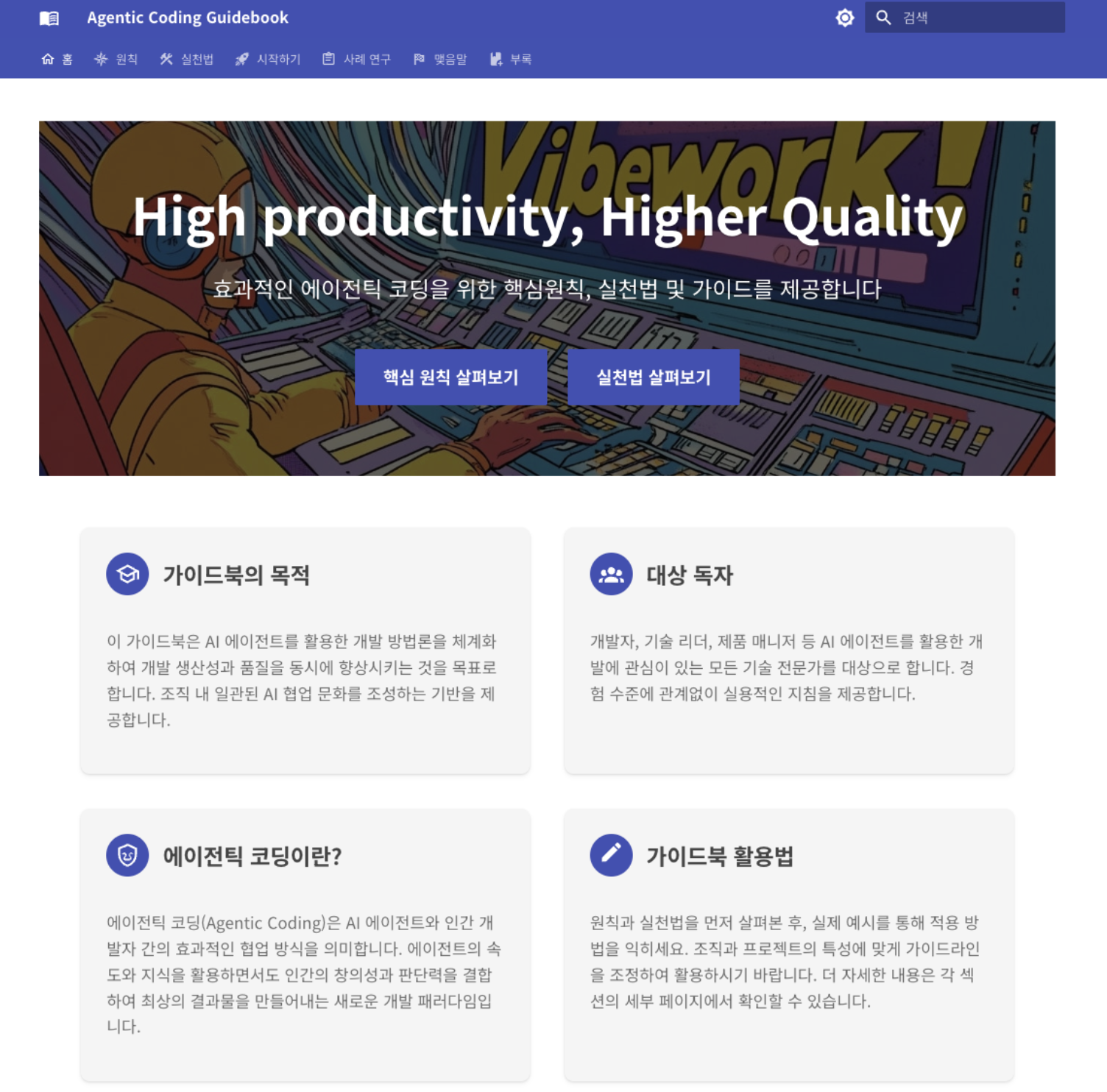TOC
Generating TOC...
2.1. Agent Coding Guidebook: Kakao’s standard for AI collaborative development
Kakao created and shared an “Agentic Coding Guidebook” containing Kakao’s unique methodologies, best practices, and technical standards for effectively collaborating with AI and developing software. This guidebook serves as a comprehensive guide to help developers in the AI era achieve the best results under the core value of “High Productivity, Higher Quality.”
The guidebook consists of two main parts: “Core Principles” and “Practical Guidelines.”
6 Key Principles for AI Collaborative Development
At the core of the guidebook are six fundamental philosophies and norms that all Kakao members should follow when collaborating with AI, regardless of tool, role, or experience level. These serve as major principles for the safe and responsible use of AI.
- The ultimate responsibility lies with the developer: AI is a powerful enabler, but the developer remains ultimately responsible for all code and output.
- Understand and verify: We must not blindly trust AI-generated results, but strive to understand how AI works and thoroughly verify its outputs.
- Security and confidentiality are top priorities: We must not include sensitive information, including company secrets or personal data, in prompts or code.
- Maintain code quality, standards, and consistency: Even with AI’s assistance, team and organizational coding standards and quality benchmarks must be adhered to.
- Human-driven design and critical thinking: Developers must take the initiative in using AI, and they must critically assess and judge AI’s proposals.
- Recognize the limitations of AI and adapt to technological changes: Recognizing that AI is not a panacea, we must constantly learn and adapt to rapidly changing AI technology.
29 Practical Ways to Turn Principles into Action
This section provides specific methodologies and guidelines on how these core principles can be applied in real work environments. It contains practical guidance needed to translate theoretical principles into actionable steps and consists of six major sections (A-F):
- A. Preparation and Setup: Covers how to optimize agent settings and effectively provide project context to AI.
- B. Use Strategic Agents: Beyond simple task requests, this presents advanced collaboration strategies such as using multiple agents in parallel or dividing tasks.
- C. Interactions and Prompts: Guides on breaking down tasks into manageable units, writing clear prompts (“plan first, code next”), and specific conversation techniques using AI as a learning partner.
- D. Code Review and Validation: Emphasizes strict verification procedures for generated code, such as the habit of immediate checking, the principle of not using code that cannot be understood or explained, and verifying the test code itself.
- E. Quality, Standards, and Security: Provides practical guidance for maintaining security and quality, such as complying with team standards, separating sensitive information, and using approved agent tools.
- F. Workflow and Mindset: Emphasizes how to debug smartly with agents, how to share success/failure stories and prompts within the team, and, above all, the mindset of fearlessly experimenting and enjoying the process.
The ‘Agentic Coding Guidebook’ is a crucial asset that provides a common understanding foundation for all members to collaborate with AI, reduces trial and error, and enables consistent, high-quality AI utilization across the enterprise.
